Discovering the spirit of China / Travelling from West to East through the work of Wang Shu [Part 01]
The reason behind this lecture was our trip to China in December 2012. In that trip, we came in contact with a different culture and we had a first-hand look into the radical changes that are taking place in this distant country. The example of China, the country that would sacrifice anything in the name of modernization, seemed to be the perfect example for us to reflect on with the terms of regionalism, modern architecture and reference to tradition. That reflection is the main idea in our research project.
China, the transformation
China, a country of a population twice as big as Europe’s, has come to the forefront of the world stage. Everyone mentions China’s example, its great financial power and the rapid developments during the last 30 years. However, how is it possible to appreciate the resources and values associated with the place? Which concepts are redefined and for which citizens?
During the last three decades, China has been turned into an example of “rapid urbanization”, the results of which are made visible through the violent changes of the landscape, cities and infrastructure. Despite the immense economic growth, the most populated country in the world has been showing signs of a cultural identity crisis. The widespread distress for the lack of a local idiom, leads architects to imitate Western models. The prevailing situation is an amalgam of a Soviet heritage, which is a remnant of the previous political situation, mixed with the modern Western idiom and the stereotypes and prejudices that make up the modern “chinesity”.
Architecture is evolving into a mechanism of profit and image. It is employed by rampant capitalism that devours every shred of free land in the name of economic growth. In all big cities, high-rise buildings are repeated with almost identical materials and methods of construction, while tradition is detected only as an image for the sake of tourism, as scattered Chinese symbolism or as remnants of a previous situation which will sooner or later disappear.
The Chinese metropolis is constantly developing around contrasts; contrasts between small and large, low and high, traditional and modern, destitute and luxurious, shadow and light, silence and deafening noise. On the one hand, the excessive xenomania inside the country which prevails and can be summarized in the phrase “what is foreign is modern” and on the other, the emergence of small-scale offices which use a method more adaptable to the place and try to transfer the spirit of the past to the present.
Approaching a different culture
François Jullien, a French philosopher and sinologist, mentions:
“In my eyes, China is a great civilization developed far from the European thought; far from our language, the great Indo-European languages, far from our history.” 1
It is extremely difficult, if not impossible, to “see” a culture outside of our own knowledge with eyes freed from the standards we have grown up with. The concepts of existence, justice, freedom, history, time and God have been born through Greek philosophy and they have given birth to European thought. The notion of existence is ontological significance for Aristotle and has been the foundation of our philosophical thought. European thought is aiming at defining a beginning and an end, thus existence means being specific. This, however, does not apply to Chinese thought too, where the existential question is not the same as the ontological one and its meaning is different.
One more interesting difference is the one we can trace in the notion of time. One characteristic of European thought is that it can clearly define the past, the present and the future, in other words it can define a beginning and an end. On the contrary, the Chinese perceive time as a transition, a transformation. For example, we think of birth and death as points of a beginning and an end respectively. However in Chinese thought, death is not the end of a condition neither is birth the beginning of one, but both are a kind of transformation.
When the Europeans came in contact with China in the 17th century, what they discovered came as a great surprise. They discovered the existence of a completely different world, «completely different compared with European references and equally developed with our world, the world of Europe» 2. Jullien calls this the « shake thought» and connects it to what Michel Foucault had said; that China is not only different, but it is also located in a different place. In his book “Words and Things”, Foucault introduces us to China’s “heterotopia”.
China as a Place
In our attempt to approach China and understand the architecture that has been and is currently being created, we must first attempt to interpret what China means as a place. In our opinion, China looks like a vast, infinite landscape that encloses thousands of contrasts within its interior. It is a great challenge to discover something of the «spirit of place» of this country.
Concepts such as singularity and existential dimension are now fields for thought and contemplation. The place, with its specific geographical characteristics, is taken into account by the architecture and urban planning theory and practice, which are trying to emotionally and experientially organize the existential space and landscape. The «spirit of place» is understood since ancient times as a reality which the person-inhabitant must face and adjust to his daily life in order to ensure his survival. For Norberg-Schulz the «spirit of place» also known as genius loci, is the spirit through which the identity, the singularities and the character of a place appear.
There are many notions about what place means. Frampton sees the place «as an Aristotelian phenomenon which arises at the symbolic level with the conscious signification of social meaning and at a concrete level with the establishment of an articulate realm on which man or men may come into being»3 For Heidegger, «place is a geographical environment acquiring scale, heterogeneity and meaning through experiential, thymic and emotional care of the human being».4 Through the literary and architectural works of Dimitris Pikionis , we understand how place constitutes a whole which is comprised of light, dirt, earth, and stone and enfolding man, his history and his life. The place is born and expressed through the sacred presence of the earth and the ground’s geometry.
Approaching China as a Place, through the prism of traditional art, is being revealed the philosophy of cosmic creation but only through the effective and genuine observation of nature. In traditional Chinese thought, the concept of guanxiang (observe – cogitate) expresses the way in which one should perceive nature. Observation is the way through which man can reconcile with nature and identify with his place. The concept of observation is linked to wandering in nature. Observation is followed by cogitation and then cosmic thought is born.
Just by looking at a tradional Chinese painting from a distance we could discern the shapes of mountains, the trees, the lake that majestically dominated in the center of the painting. All parts seemed to have found their place in a composition that does not simply capture the scenery, but reveals an entire philosophy for the understanding of the world. In such a world, man is also an element of nature. The individual figure in the landscape of mountains and trees does not hold a leading role in the composition.
A place is presented as a whole that yields a character, an atmosphere. However, the structure of a place does not constitute a constant, eternal condition. Places change, and sometimes very quickly. That doesn’t necessarily mean that the spirit of the place changes too or fades away. The spirit of the place, the spirit of China, is the people who live there, the religions that define their way of life, the way in which they see and respect nature and coexist with it. This spirit, however, cannot be expressed with words nor can it be captured with ink. It lives in the little, daily things, and we need to keep our eyes open and our thought free in order to see it.
We wondered, therefore, if we can find any traces of China’s spirit in Wang Shu’s buildings.
The awarding of the Pritzker Prize (2012) to the obscure Chinese architect Wang Shu brought the issue of the connection of modern architecture with tradition and the place back to the surface. This award was the beginning of our reflection, which is summarized in the following questions:
• Can we approach China as a place in terms of regionalism which were developed in Europe?
• Is there a link between traditional and modern Chinese architecture?
• How does Wang Shu use history, tradition and the characteristics of the place in his work?
Visiting the architect`s works and our experience with space leads us to try and give answers to these questions. However, approaching such a distant and different culture with Western eyes entails risks. Which “Chinese” place are we called to discover, what is its story and what is the philosophy of the people who live and build it?
NOTES
1. François Jullien, Praise of blandness: proceeding from Chinese thought and aesthetics, New York : Zone Books, 2004, p.13
2. François Jullien, Praise of blandness: proceeding from Chinese thought and aesthetics, New York : Zone Books, 2004 , p.16
3. Kenneth Frampton’s essay intitled “On reading Heidegger“ from the book “Theorizing a
new agenda of architecture-An Anthropology of Architectural Theory 1965-1995“, Kate Nesbitt, Princeton Architectural Press, 1966
You can read more here.
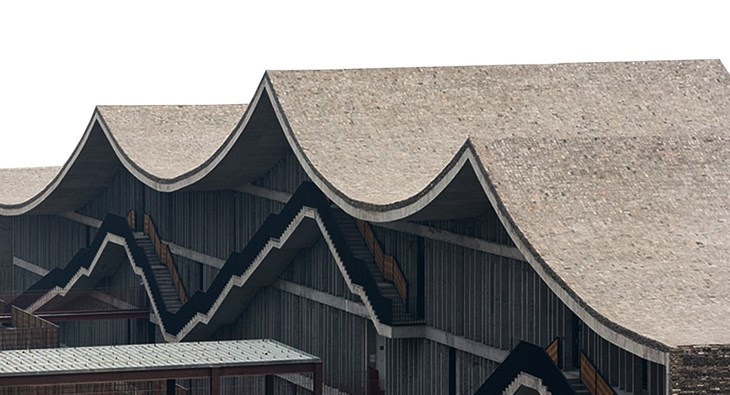 ROOF OF ARCHITECTURE SCHOOL, XIANGSHAN CAMPUS
ROOF OF ARCHITECTURE SCHOOL, XIANGSHAN CAMPUS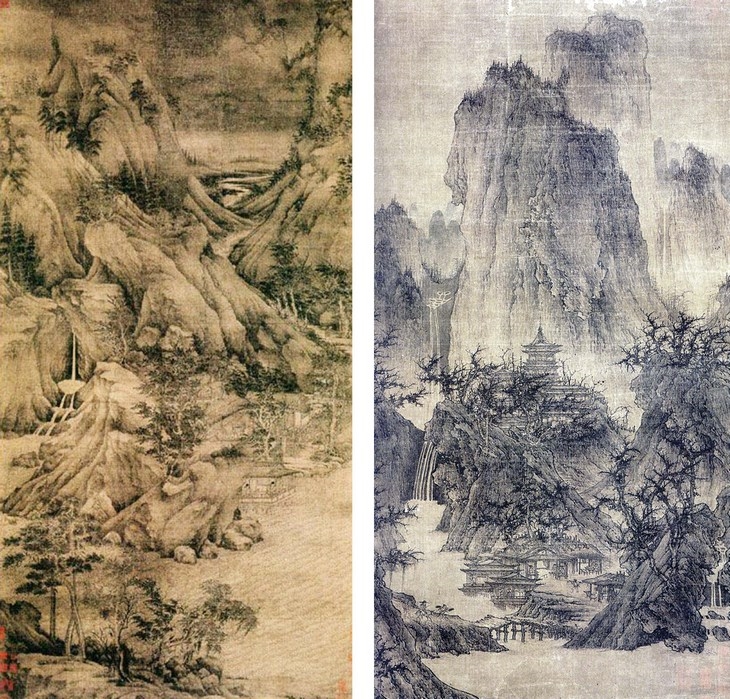 LEFT: DONG YUAN ( 930-960), RIVERBANK, RIGHT: LI CHENG (919-967), A SOLITARY TEMPLE IN MOUNTAIN
LEFT: DONG YUAN ( 930-960), RIVERBANK, RIGHT: LI CHENG (919-967), A SOLITARY TEMPLE IN MOUNTAIN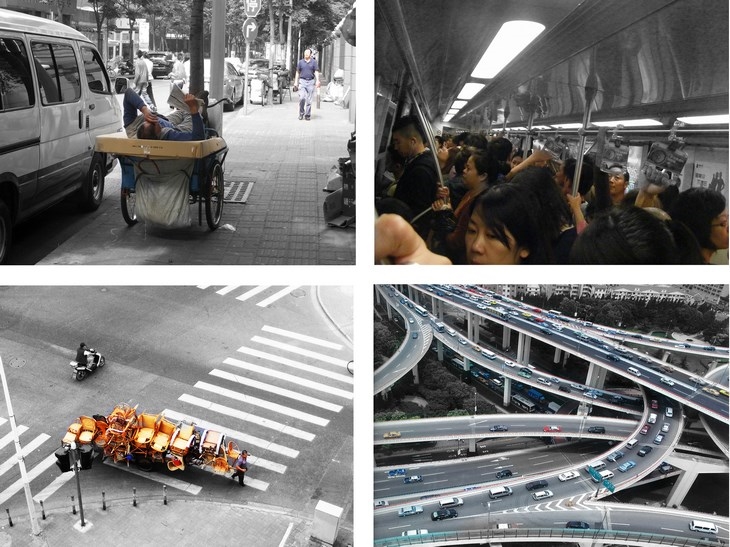 URBAN CONTRADICTIONS
URBAN CONTRADICTIONS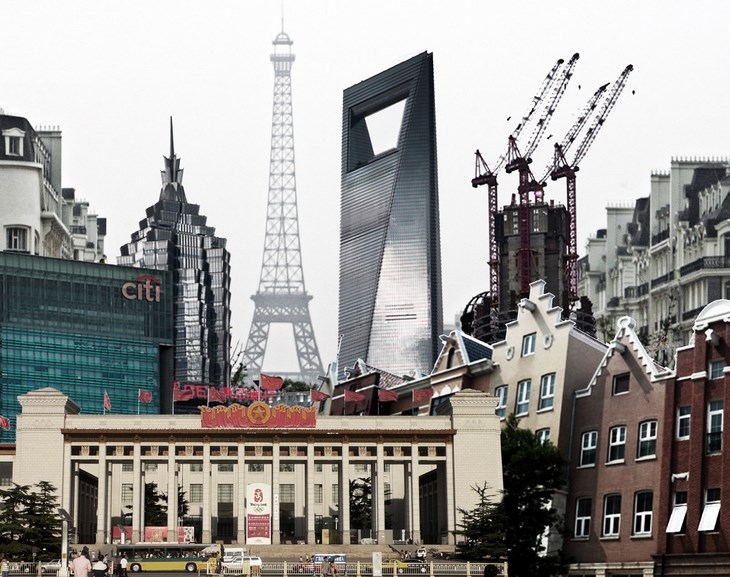 COLLAGE OF ARCHITECTURAL STYLES IN CHINA
COLLAGE OF ARCHITECTURAL STYLES IN CHINA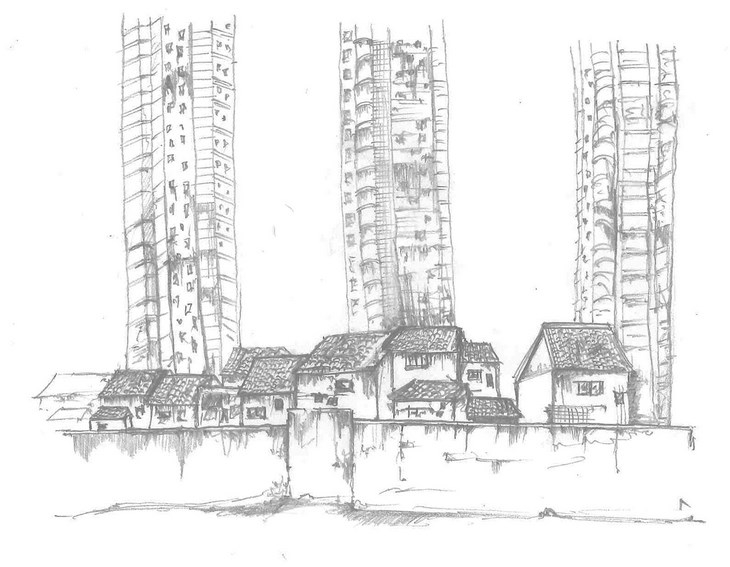 A BIG CONTRAST BETWEEN OLD HOUSES AND NEW SKYSCRAPERS
A BIG CONTRAST BETWEEN OLD HOUSES AND NEW SKYSCRAPERSREAD ALSO: DISCOVERING THE SPIRIT OF CHINA / LECTURE BY MYRSINI ALEXANDRIDI & MICHALIS TAKOPOULOS [PART 02]